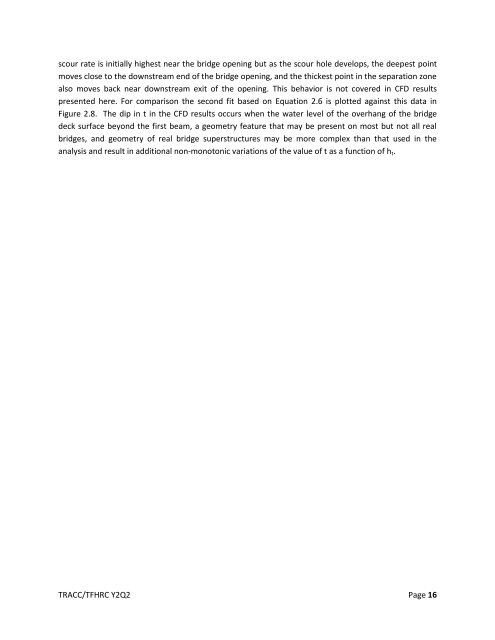Computational Mechanics Research and Support for Aerodynamics ...
Computational Mechanics Research and Support for Aerodynamics ...
Computational Mechanics Research and Support for Aerodynamics ...
- No tags were found...
You also want an ePaper? Increase the reach of your titles
YUMPU automatically turns print PDFs into web optimized ePapers that Google loves.
scour rate is initially highest near the bridge opening but as the scour hole develops, the deepest point<br />
moves close to the downstream end of the bridge opening, <strong>and</strong> the thickest point in the separation zone<br />
also moves back near downstream exit of the opening. This behavior is not covered in CFD results<br />
presented here. For comparison the second fit based on Equation 2.6 is plotted against this data in<br />
Figure 2.8. The dip in t in the CFD results occurs when the water level of the overhang of the bridge<br />
deck surface beyond the first beam, a geometry feature that may be present on most but not all real<br />
bridges, <strong>and</strong> geometry of real bridge superstructures may be more complex than that used in the<br />
analysis <strong>and</strong> result in additional non-monotonic variations of the value of t as a function of h t .<br />
TRACC/TFHRC Y2Q2 Page 16

















